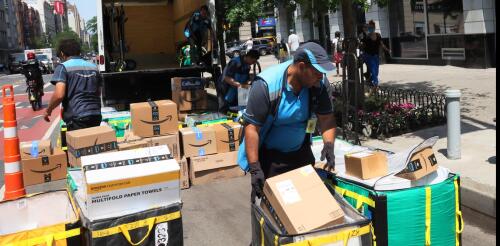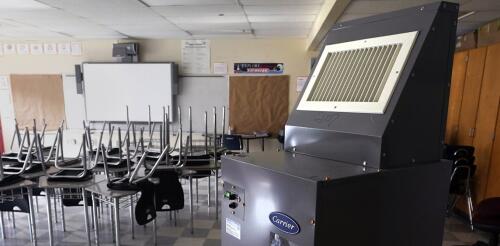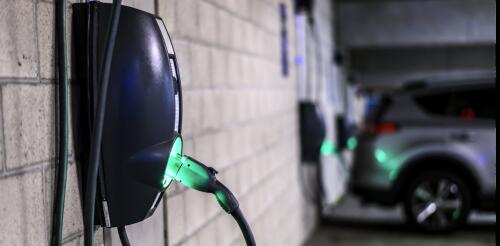Air pollution
As part of its effort to reduce air pollution and cut greenhouse gas emissions that contribute to climate change, California is pursuing aggressive policies to promote clean trucks. The state already requires that by 2035, all new cars and other light-duty vehicles sold in the state must be zero emission. Its powerful Air Resources Board has adopted rules requiring that most trucks be zero emission by 2035, and is now proposing that all trucks sold by 2040 must be zero emission. The Conversation asked a panel of transportation experts from the University of California, Davis what’s involved in such a rapid transition. 1. Why is California targeting medium- and heavy-duty trucks? Although diesel engines are valuable for moving heavy loads, they also are major polluters. Diesel trucks account for one-fourth of greenhouse gas emissions and about half of conventional air pollution from transportation in U.S. cities. Pollutants in diesel exhaust include nitrogen oxides, fine...
Curious Kids is a series for children of all ages. If you have a question you’d like an expert to answer, send it to curiouskidsus@theconversation.com. How many Amazon packages get delivered each year? – Aya K., age 9, Illinois It’s incredibly convenient to buy something online, right from your computer or phone. Whether it’s a high-end telescope or a resupply of toothpaste, the goods appear right at your doorstep. This kind of shopping is called “e-commerce” and it’s becoming more popular each year. In the U.S., it has grown from a mere 7% of retail purchases in 2012 to 19.6% of retail and US$791.7 billion in sales in 2020. Amazon’s growing reach For Amazon, the biggest player in e-commerce, this means delivering lots of packages. In 2021 the company shipped an estimated 7.7 billion packages globally, based on its nearly $470 billion in sal...
As fall temperatures cool across the U.S., many schools will struggle to ventilate classrooms while also keeping students and teachers comfortable and healthy. Children and teachers spend over six hours a day in classrooms during the school year, often in buildings that are decades old and have inadequate heating, ventilation and air conditioning, or HVAC, systems. Fall 2022 marks the start of the fourth school year affected by the COVID-19 pandemic, which has spotlighted the importance of indoor air quality in schools. Ideally, all school buildings would have adequate ventilation, filtered air in each classroom and windows that open. Sadly, this is not the case – and indoor air quality in many schools is poor as a result. This is especially problematic in the wake of the U.S. Centers for Disease Control and Prevention’s August 2022 COVID-19 guidance for schools, which scales back other measures for limiting transmission, such as masking, testing and quarantining. B...
A nationally representative survey of 8,027 Americans shows that across all racial demographics, overall interest in purchasing electric vehicles is high. Among those surveyed, 33% of white respondents, 38% of Black respondents, 43% of Latinos and 52% of Asian Americans say they would “definitely” or “seriously consider” purchasing or leasing an EV as their next vehicle. The survey was conducted by Consumer Reports, with input from the nonprofit advocacy groups GreenLatinos, the Union of Concerned Scientists and EVNoire and administered between Jan. 27 and Feb. 18, 2022, by NORC at the University of Chicago, an objective, nonpartisan research organization. Electric vehicles are critical for reducing transportation emissions, but communities of color currently adopt this key technology at lower rates than white drivers. This survey, for which I was an adviser, helps to shed light on some of the reasons for this disparity. Cleaner air for all Air pollut...
Cooks love their gadgets, from countertop slow cookers to instant-read thermometers. Now, there’s increasing interest in magnetic induction cooktops – surfaces that cook much faster than conventional stoves, without igniting a flame or heating an electric coil. Some of this attention is overdue: Induction has long been popular in Europe and Asia, and it is more energy-efficient than standard stoves. But recent studies have also raised concerns about indoor air emissions from gas stoves. Academic researchers and agencies such as the California Air Resources Board have reported that gas stoves can release hazardous air pollutants while they’re operating, and even when they’re turned off. A 2022 study by U.S. and Australian researchers estimates that nearly 13% of current childhood asthma cases in the U.S. are attributable to gas stove use. Dozens of U.S. cities have adopted or are considering regulations that bar natural gas hookups in new-construction h...




